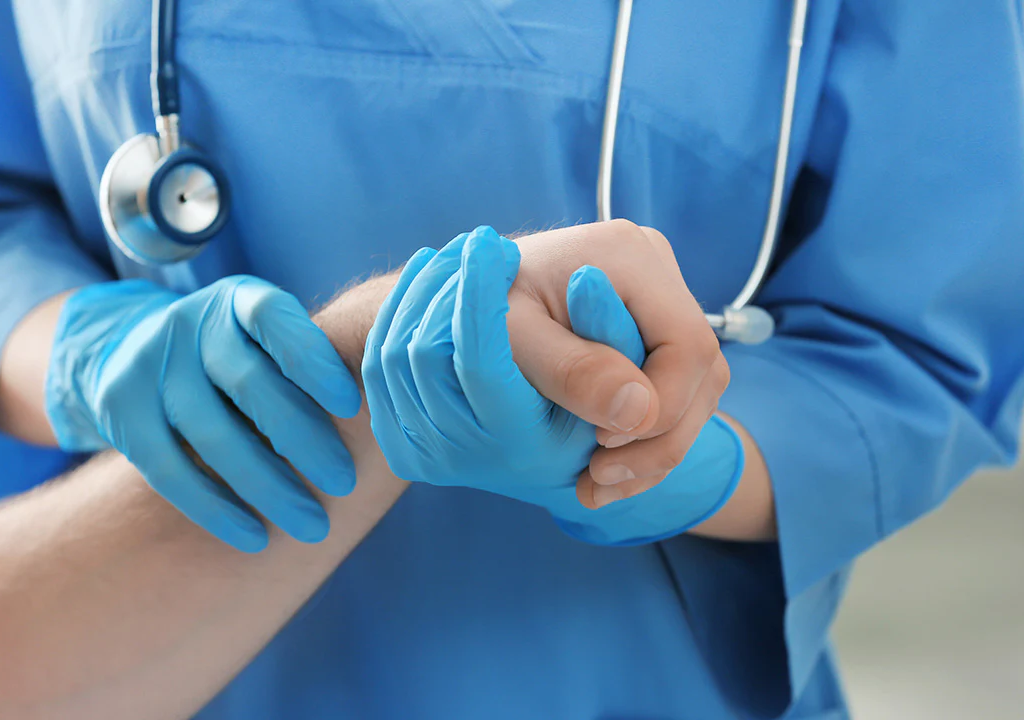Maintaining a high safety and hygiene standard is of utmost importance in medical settings. Healthcare professionals are consistently exposed to infectious agents and bodily fluids, making using personal protective equipment (PPE) essential. Among the many types of PPE, vinyl gloves play a crucial role in safeguarding medical staff and patients. This article will explore its significance in medical settings, highlighting its contribution to safety, hygiene, and infection control.
1. Preventing Cross-Contamination
One of the primary functions in medical settings is to prevent cross-contamination. Healthcare workers interact with numerous patients throughout their shifts, each with unique health conditions. Wearing gloves creates a barrier between the healthcare professional’s hands and the patient, reducing the risk of transmitting infectious agents from one individual to another. This simple yet effective measure helps contain the spread of infections within the healthcare facility.
2. Protecting Healthcare Professionals
Healthcare professionals, like doctors, nurses, and medical assistants, are continuously exposed to potentially hazardous substances while providing patient care. These substances may include blood, bodily fluids, chemicals, and pathogens. They act as a protective shield, guarding the skin from direct contact with these substances and reducing the risk of exposure to infectious materials. By minimising the chance of contamination, healthcare workers can confidently carry out their duties without compromising their safety.
3. Maintaining Hygiene During Medical Procedures
Whether minor or complex, medical procedures require strict adherence to hygiene protocols. Vinyl gloves are an integral part of maintaining cleanliness during these procedures. Whether it’s a simple wound dressing change or a surgical operation, wearing gloves ensures that the healthcare professional’s hands remain sterile throughout the process. This reduces the introduction of external contaminants and minimises the likelihood of surgical site infections and other post-procedure complications.
4. Allergen-Free Alternative
Vinyl gloves serve as an allergen-free alternative to latex gloves for individuals with latex sensitivity or allergy. Latex allergies can range from mild irritation to severe anaphylactic reactions. By using vinyl gloves, healthcare facilities can accommodate staff and patients with adverse reactions to latex, fostering a safer and more inclusive environment for everyone.
5. Cost-Effective Solution
Apart from being a practical choice for safety and hygiene, vinyl gloves are also a cost-effective solution for medical facilities. They are generally more affordable than other gloves, such as nitrile and latex gloves. This cost advantage allows healthcare facilities to allocate their budgets more efficiently while maintaining high infection control and safety standards for their staff and patients.
Proper Usage and Disposal of Vinyl Gloves:

To maximise their benefits in medical settings, it is crucial to follow proper usage and disposal protocols:
Hand Hygiene:
Before wearing gloves, healthcare professionals should practise thorough hand hygiene using soap and water or an alcohol-based hand sanitiser.
Correct Glove Size:
Properly fitting gloves offer better dexterity and reduce the risk of tears. Healthcare workers should select gloves that fit snugly but comfortably.
Single Use Only:
they are intended for single use only. After each patient interaction or procedure, gloves should be removed and disposed of properly.
Avoid Touching Surfaces:
Healthcare workers should avoid touching surfaces or objects not directly related to patient care while wearing gloves to prevent cross-contamination.
Disposal in Proper Containers:
Used gloves should be disposed of in designated containers for medical waste to ensure safe disposal and prevent environmental contamination.
In conclusion, vinyl gloves play a pivotal role in upholding safety and hygiene standards in medical settings. Their ability to prevent cross-contamination, protect healthcare professionals, maintain cleanliness during procedures, and serve as an allergen-free option makes them invaluable in infection control. As a cost-effective solution, they provide a practical approach to ensuring the medical staff’s and patient’s well-being. By following proper usage and disposal guidelines, healthcare facilities can harness their full potential, contributing to a safer and healthier healthcare environment.

